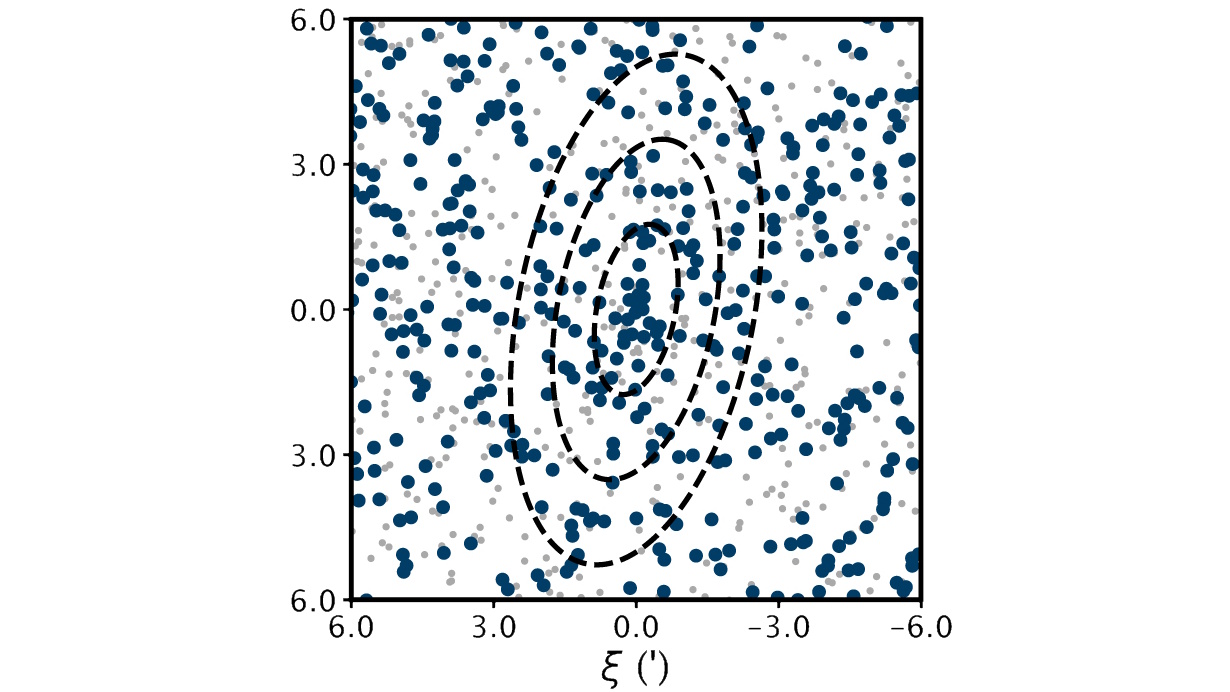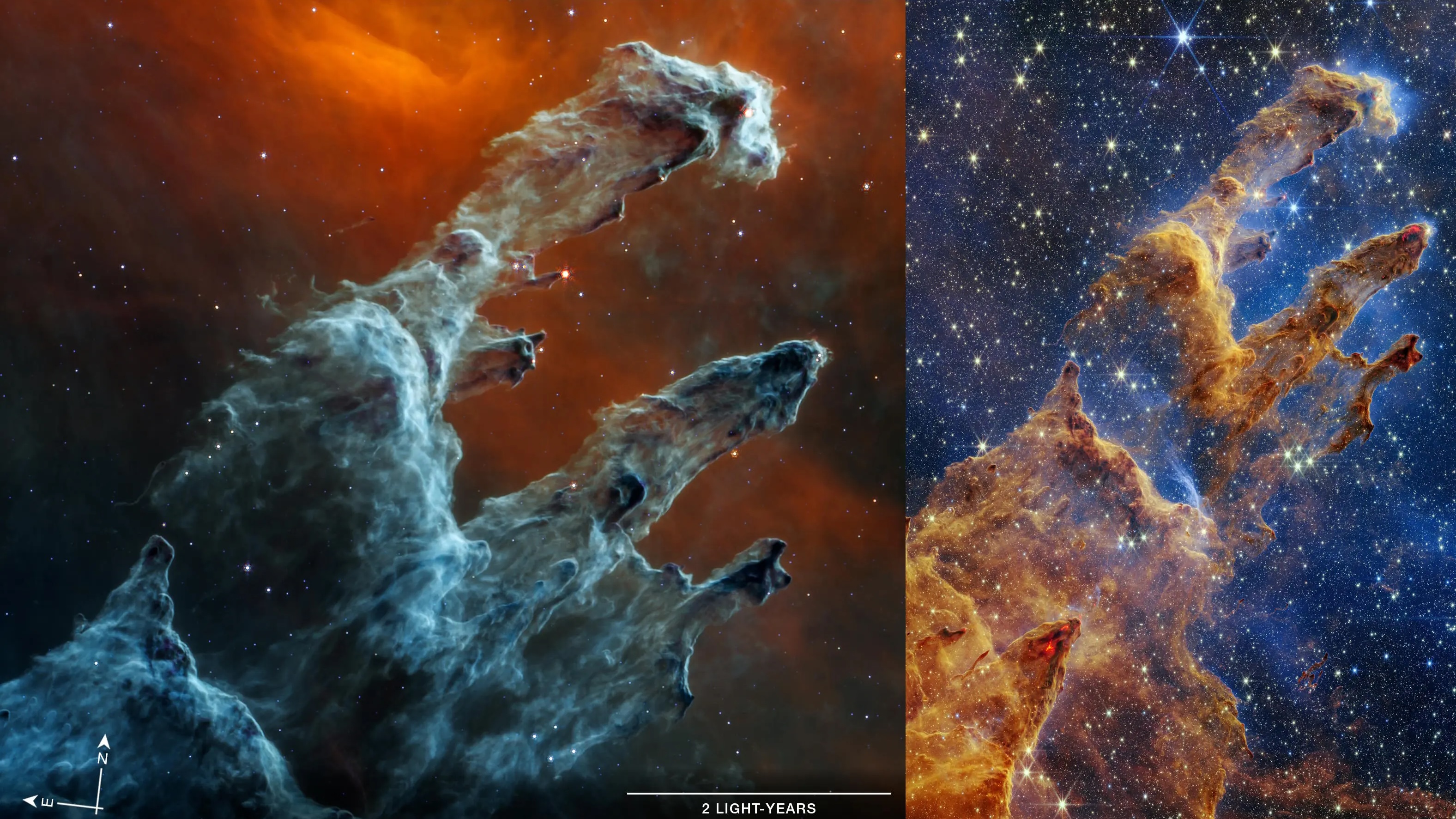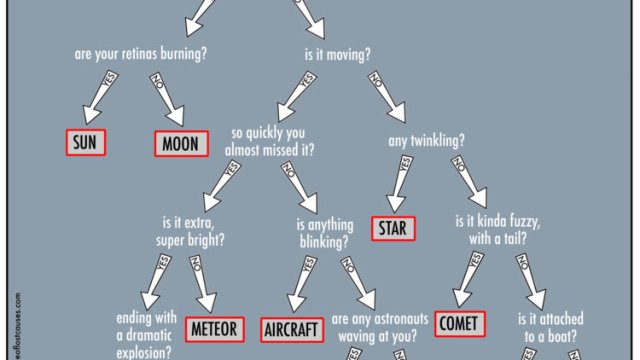Messier Monday: The Overlooked Globular, M14
It’s not “particularly” any one characteristic, and that makes it a rarity worth looking at.
“Conceit spoils the finest genius. There is not much danger that real talent or goodness will be overlooked long; even if it is, the consciousness of possessing and using it well should satisfy one, and the great charm of all power is modesty.” –Louisa May Alcott
With 110 deep-sky objects making up the Messier catalogue — the brightest, most prominent and easily visible deep-sky objects gracing the northern 2/3 of the celestial sky — every single object has its own unique story to tell. With 40 galaxies, 29 globular clusters, 27 open clusters, 11 nebulae of various types and 3 ‘anomalies,’ the catalogue is an excellent sampling of what any observer in a Milky Way-like galaxy would see as the brightest, most easily visible non-stellar (or planetary) objects in their night sky.
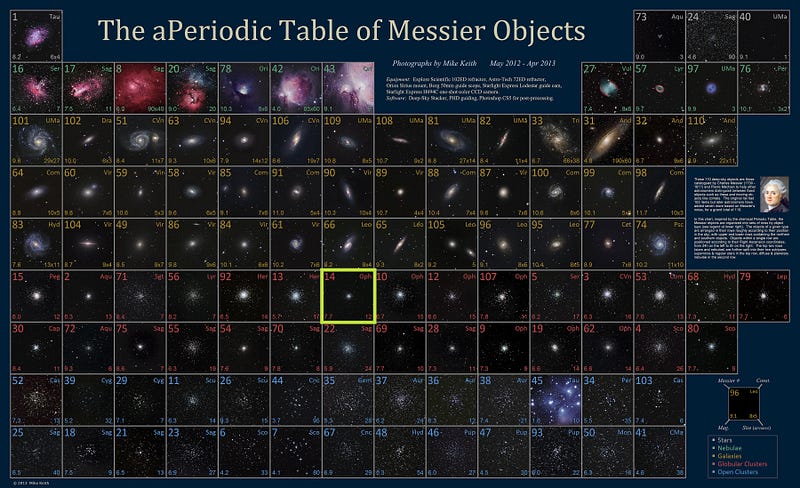
The globular clusters are the largest, densest collections of stars you’re likely to find outside of a galaxy’s core, and these collections of tens-of-thousands to millions of stars are normally found orbiting a galaxy in its halo. The Milky Way alone has nearly 200 of them, and today’s object of choice — Messier 14 — is perhaps the most typical in all ways, which makes it one-of-a-kind! Here’s how to find it.
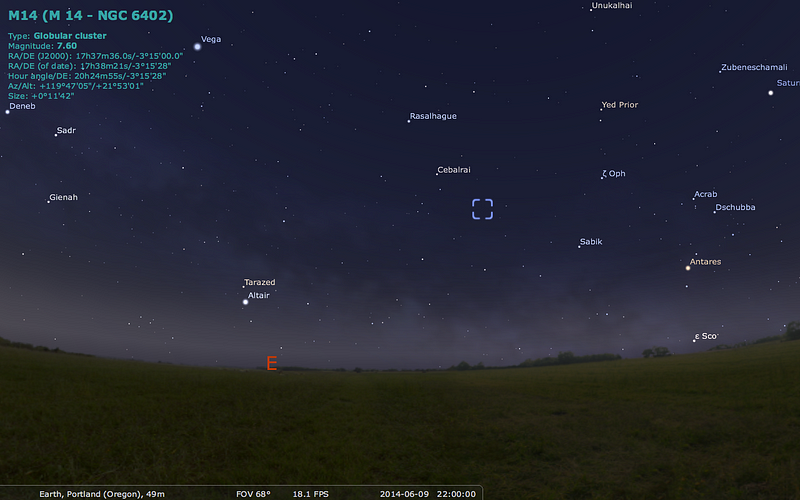
Shortly after sunset — which is getting awfully late in the northern hemisphere as we near the summer solstice — a few familiar summer sights begin to show themselves: brilliant Antares and the constellation of Scorpius in the southeast and the summer triangle heralded by Vega, Deneb and Altair in the east/northeast.
But if you’re on the hunt for Messier 14, you’ll want to look midway between those two areas of sky, where the brightest stars are far less prominent: Rasalhague and Cebalrai.
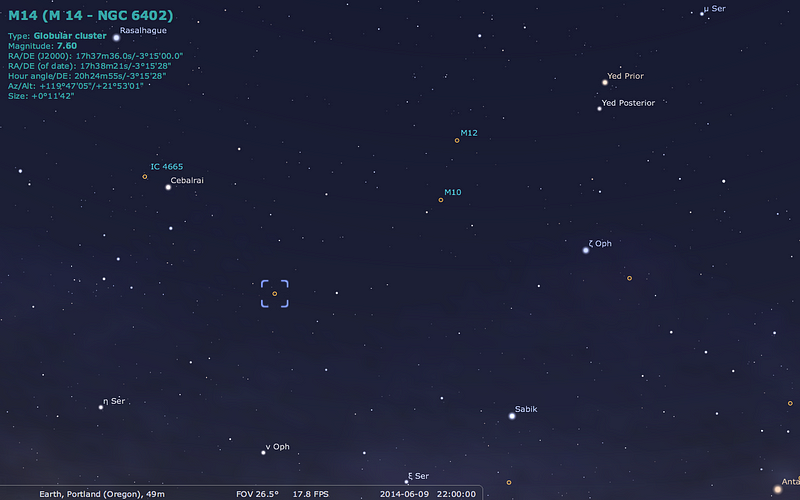
Rasalhague and Cebalrai are two of the three brightest stars in the constellation of Ophiuchus, above, along with Sabik, which is a little farther along the way towards Antares. If you imagine making a giant, sweeping “arc” from Rasalhague to Antares that passes through Cebalrai and Sabik, you can find Messier 14 right along that imaginary curve, about a third of the way from Cebalrai to Sabik.
If you look at that region of sky through binoculars or a finderscope, there are five (naked-eye or almost naked-eye) stars that are likely to stand out, labelled below.
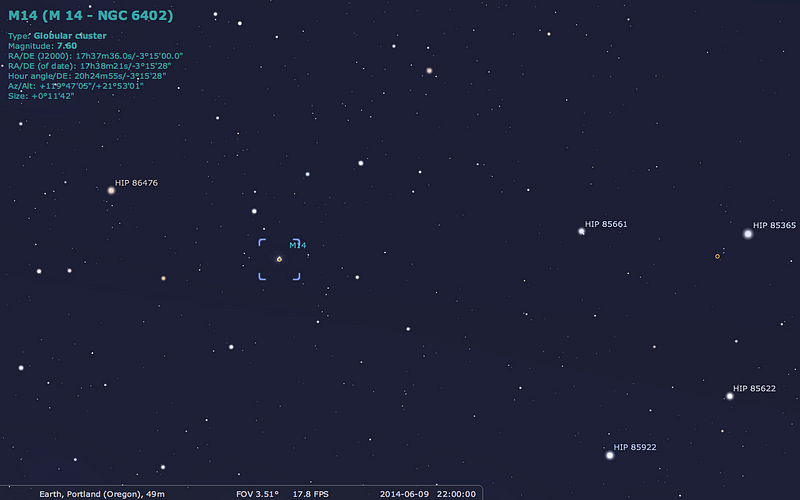
And the reddest one — the red giant HIP 86476 — will be just about a single degree away from your target. An original discovery of Messier himself, it was first described as:
“Nebula without star, discovered in the garb which dresses the right arm of Ophiuchus, & situated on the parallel of Zeta of Serpens: this nebula is not large, its light is faint, one can see it nevertheless with an ordinary telescope of three feet and a half; it is round, near it is a small star of the nineth magnitude”
Through a modest-sized, modern telescope, a sight akin to this likely awaits you.
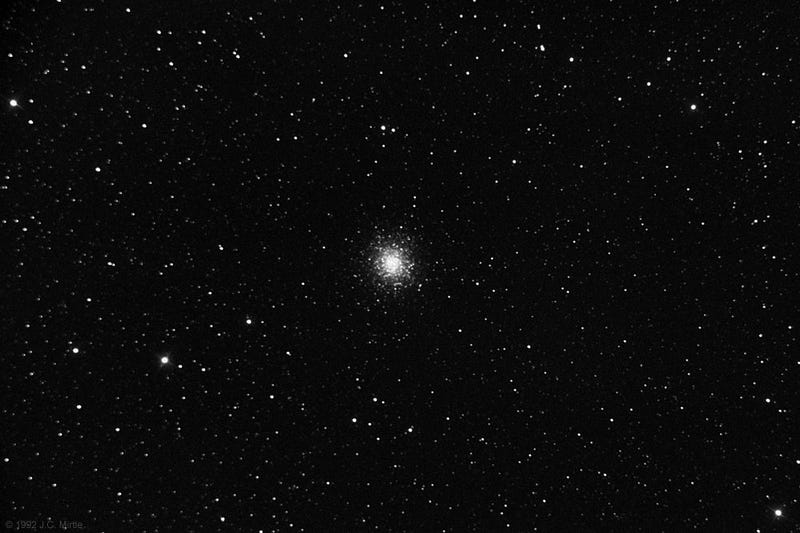
It’s not as closer or bright as the nearby M10 or M12, and so skywatchers often miss this treat. But in doing so, they miss the opportunity to learn about the one globular in the Messier catalogue that, if there were a Westminster dog show about globular clusters, would surely win.
Globular clusters have anywhere from tens of thousands to millions of stars, and Messier 14 comes in right in the middle of that range: a few hundred thousand. The total mass of this cluster is around a million Suns, again, very typical for a globular cluster.
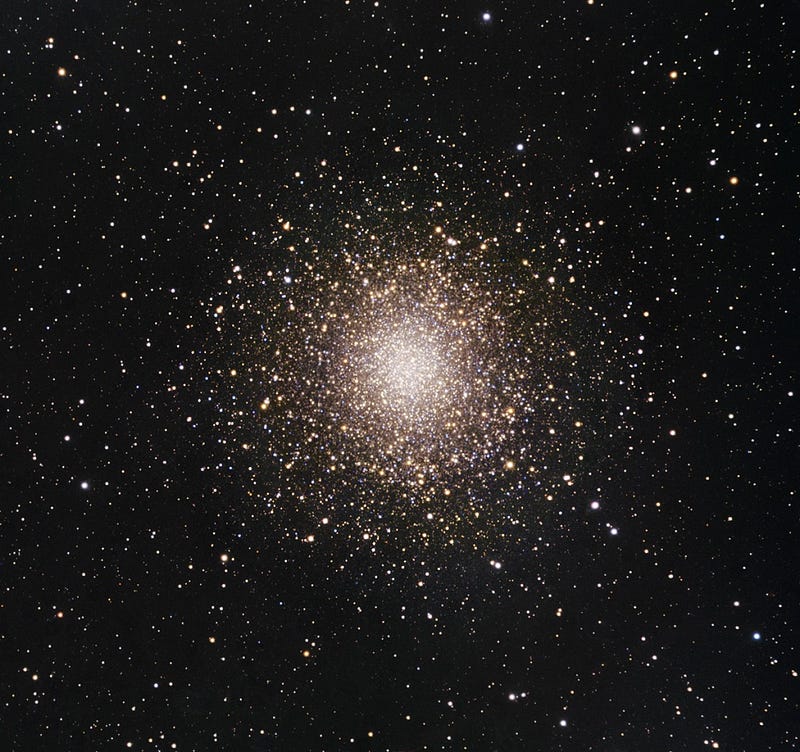
Many globulars are among the oldest objects in the Universe, some containing even fewer than 1% the amount of heavy elements our Sun has. On the other hand, some were formed quite recently, and have a much richer concentration of heavy elements. Messier 14, once again, comes in right in the middle, with about 5% of the heavy elements found in the Sun. This — combined with the color and type of stars present within it — allows us to determine the age of this object.
It’s very likely between 11 and 12 billion years old; a typically average value for the globular clusters in our galaxy.
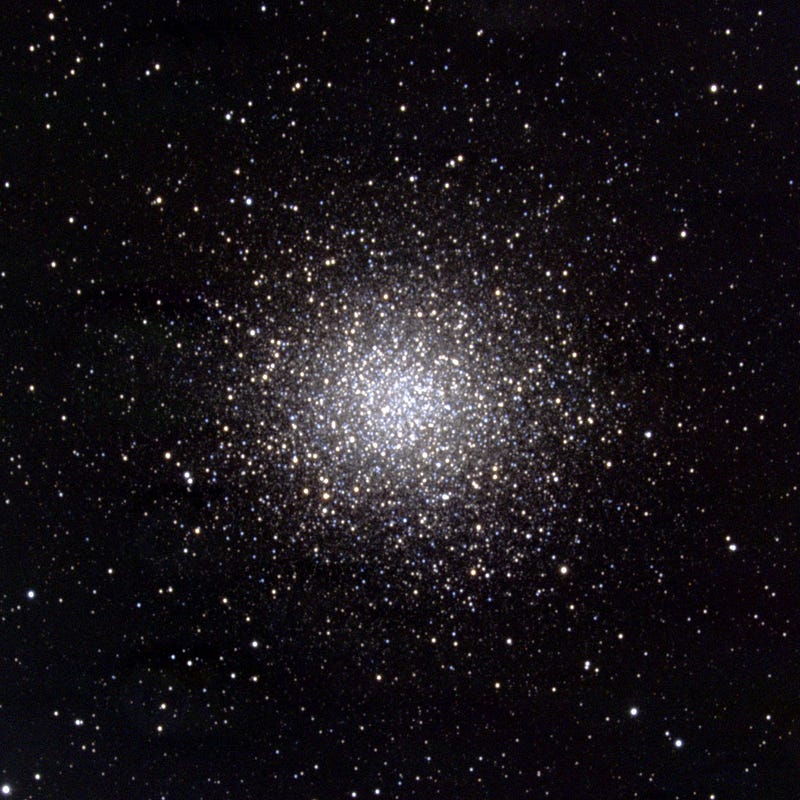
What about distance? The Messier globulars range from about 13,000 to 87,000 light years distant, with the typical globular being a little farther away from us than the galactic center (at 25-27,000 light-years). We actually know the distance to Messier 14 better than that, thanks to variable star measurements: it comes in at 30,300 light-years distant.
Again, typical.
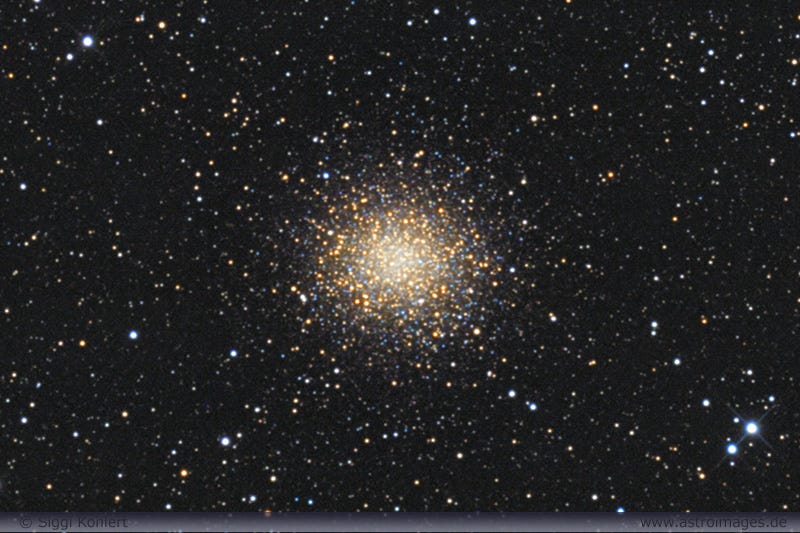
But what of the variable stars in there? Back in the first half of the 20th century, we realized that there are two types of Cepheid variables, the variable stars we use to determine distances to our nearest intergalactic neighbors. While Type I Cepheids are young, hot, bright blue stars, the Type IIs are older, lower in mass and found in great abundance in older, globular clusters. Some globulars only have a couple of dozen, others have hundreds.
Did you guess that M14 would be right in the middle? It sure is: there are 70 known variables present within it.
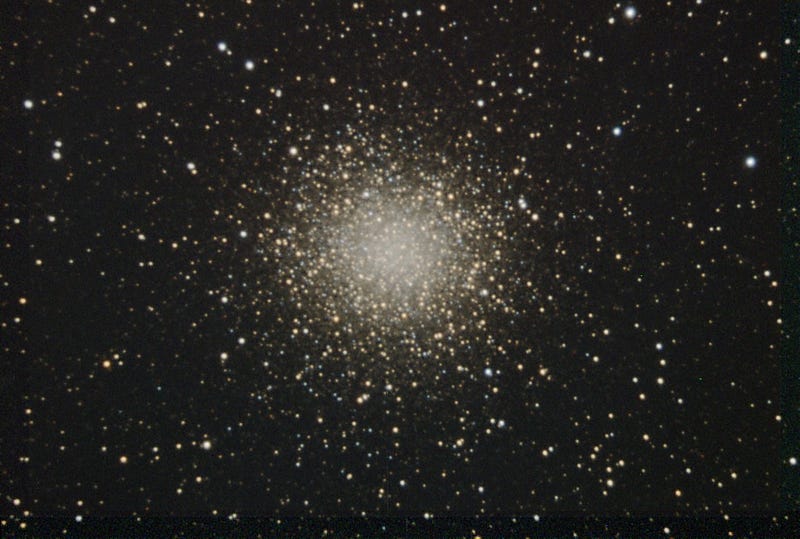
And what of the size, shape, and density of the globular itself?
It’s about 50 light-years in radius, slightly (but not significantly) on the larger side of average. It’s slightly elongated in one direction, making it almost perfectly spherical but not quite: the most common shape. And as far as concentration goes, the most concentrated cores are of Shapley-Sawyer concentration class I, while the least concentrated are class XII. Messier 14 comes in at class VII: again, right in the middle.
Is there anything remarkable about this globular?
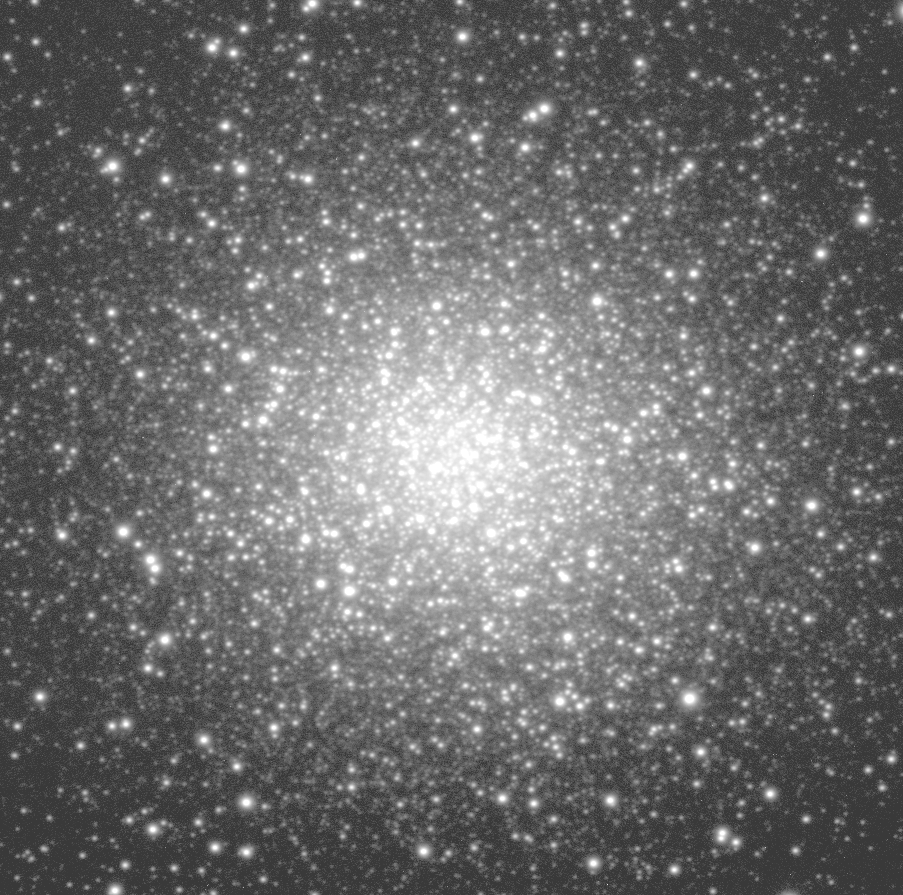
The closest thing to atypical about it is that it’s got a somewhat larger-than-normal number of RR Lyrae variable stars, a very intrinsically dim variable type used to calibrate distances to objects within our own galaxy.
But perhaps what’s really the most unusual thing about this object is how typical it actually is. Just like human beings, deep-sky objects normally have a few ways in which each one is unusual; being this normal in and of itself makes Messier 14 an anomaly, but also an object worth looking at. If for no other reason, it helps us understand what an “average” globular cluster really looks like!
The Hubble data that exists on this object is terrible (and unfit for your viewing pleasure), so here’s the best amateur image I’ve been able to find. The color-and-brightness contrast in even a “typical” globular like this is something to marvel at!
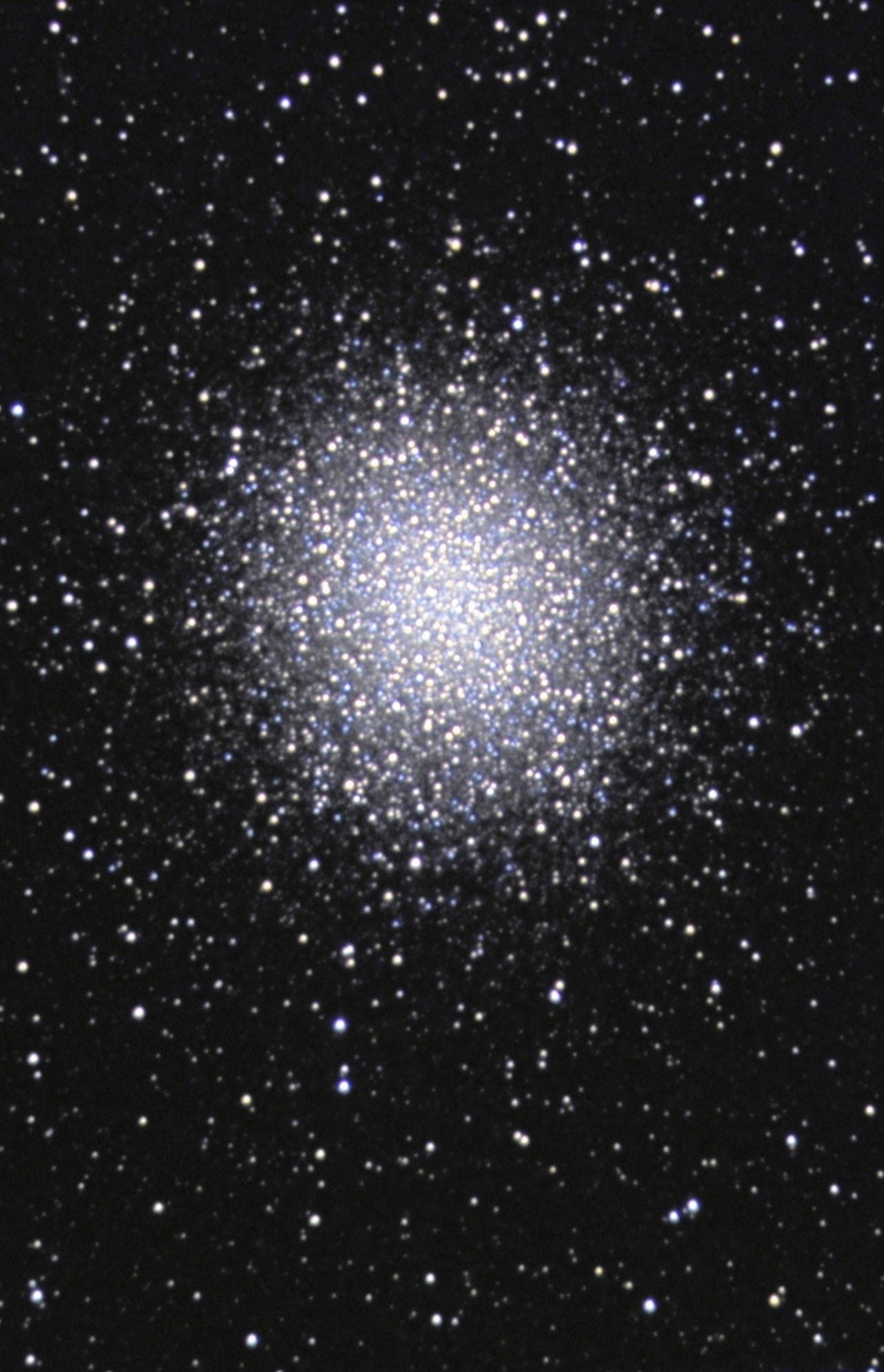
Some other fun things about this globular: it’s home to only the second nova ever observed in a globular (and the first one ever photographed), and is known to contain a very rare carbon star, where the outer (hydrogen-and-helium) layers have likely been stripped away by a companion star. Even typical places in this Universe contain wondrous things to marvel at!
And with that, we come to the end of today’s Messier Monday. Have a look back at any-and-all of our previous entries:
- M1, The Crab Nebula: October 22, 2012
- M2, Messier’s First Globular Cluster: June 17, 2013
- M3, Messier’s First Original Discovery: February 17, 2014
- M4, A Cinco de Mayo Special: May 5, 2014
- M5, A Hyper-Smooth Globular Cluster: May 20, 2013
- M7, The Most Southerly Messier Object: July 8, 2013
- M8, The Lagoon Nebula: November 5, 2012
- M10, A Perfect Ten on the Celestial Equator: May 12, 2014
- M11, The Wild Duck Cluster: September 9, 2013
- M12, The Top-Heavy Gumball Globular: August 26, 2013
- M13, The Great Globular Cluster in Hercules: December 31, 2012
- M14, The Overlooked Globular: June 9, 2014
- M15, An Ancient Globular Cluster: November 12, 2012
- M18, A Well-Hidden, Young Star Cluster: August 5, 2013
- M20, The Youngest Star-Forming Region, The Trifid Nebula: May 6, 2013
- M21, A Baby Open Cluster in the Galactic Plane: June 24, 2013
- M25, A Dusty Open Cluster for Everyone: April 8, 2013
- M29, A Young Open Cluster in the Summer Triangle: June 3, 2013
- M30, A Straggling Globular Cluster: November 26, 2012
- M31, Andromeda, the Object that Opened Up the Universe: September 2, 2013
- M32, The Smallest Messier Galaxy: November 4, 2013
- M33, The Triangulum Galaxy: February 25, 2013
- M34, A Bright, Close Delight of the Winter Skies: October 14, 2013
- M36, A High-Flying Cluster in the Winter Skies: November 18, 2013
- M37, A Rich Open Star Cluster: December 3, 2012
- M38, A Real-Life Pi-in-the-Sky Cluster: April 29, 2013
- M39, The Closest Messier Original: November 11, 2013
- M40, Messier’s Greatest Mistake: April 1, 2013
- M41, The Dog Star’s Secret Neighbor: January 7, 2013
- M42, The Great Orion Nebula: February 3, 2014
- M44, The Beehive Cluster / Praesepe: December 24, 2012
- M45, The Pleiades: October 29, 2012
- M46, The ‘Little Sister’ Cluster: December 23, 2013
- M47, A Big, Blue, Bright Baby Cluster: December 16, 2013
- M48, A Lost-and-Found Star Cluster: February 11, 2013
- M49, Virgo’s Brightest Galaxy: March 3, 2014
- M50, Brilliant Stars for a Winter’s Night: December 2, 2013
- M51, The Whirlpool Galaxy: April 15th, 2013
- M52, A Star Cluster on the Bubble: March 4, 2013
- M53, The Most Northern Galactic Globular: February 18, 2013
- M56, The Methuselah of Messier Objects: August 12, 2013
- M57, The Ring Nebula: July 1, 2013
- M58, The Farthest Messier Object (for now): April 7, 2014
- M59, An Elliptical Rotating Wrongly: April 28, 2014
- M60, The Gateway Galaxy to Virgo: February 4, 2013
- M61, A Star-Forming Spiral: April 14, 2014
- M63, The Sunflower Galaxy: January 6, 2014
- M64, The Black Eye Galaxy: February 24, 2014
- M65, The First Messier Supernova of 2013: March 25, 2013
- M66, The King of the Leo Triplet: January 27, 2014
- M67, Messier’s Oldest Open Cluster: January 14, 2013
- M68, The Wrong-Way Globular Cluster: March 17, 2014
- M71, A Very Unusual Globular Cluster: July 15, 2013
- M72, A Diffuse, Distant Globular at the End-of-the-Marathon: March 18, 2013
- M73, A Four-Star Controversy Resolved: October 21, 2013
- M74, The Phantom Galaxy at the Beginning-of-the-Marathon: March 11, 2013
- M75, The Most Concentrated Messier Globular: September 23, 2013
- M77, A Secretly Active Spiral Galaxy: October 7, 2013
- M78, A Reflection Nebula: December 10, 2012
- M79, A Cluster Beyond Our Galaxy: November 25, 2013
- M81, Bode’s Galaxy: November 19, 2012
- M82, The Cigar Galaxy: May 13, 2013
- M83, The Southern Pinwheel Galaxy, January 21, 2013
- M84, The Galaxy at the Head-of-the-Chain, May 26, 2014
- M85, The Most Northern Member of the Virgo Cluster, February 10, 2014
- M86, The Most Blueshifted Messier Object, June 10, 2013
- M87, The Biggest One of them All, March 31, 2014
- M88, A Perfectly Calm Spiral in a Gravitational Storm, March 24, 2014
- M90, The Better-You-Look, The Better-It-Gets Galaxy, May 19, 2014
- M92, The Second Greatest Globular in Hercules, April 22, 2013
- M93, Messier’s Last Original Open Cluster, January 13, 2014
- M94, A double-ringed mystery galaxy, August 19, 2013
- M95, A Barred Spiral Eye Gazing At Us, January 20, 2014
- M96, A Galactic Highlight to Ring in the New Year, December 30, 2013
- M97, The Owl Nebula, January 28, 2013
- M98, A Spiral Sliver Headed Our Way, March 10, 2014
- M99, The Great Pinwheel of Virgo, July 29, 2013
- M101, The Pinwheel Galaxy, October 28, 2013
- M102, A Great Galactic Controversy: December 17, 2012
- M103, The Last ‘Original’ Object: September 16, 2013
- M104, The Sombrero Galaxy: May 27, 2013
- M105, A Most Unusual Elliptical: April 21, 2014
- M106, A Spiral with an Active Black Hole: December 9, 2013
- M107, The Globular that Almost Didn’t Make it: June 2, 2014
- M108, A Galactic Sliver in the Big Dipper: July 22, 2013
- M109, The Farthest Messier Spiral: September 30, 2013
And join us tomorrow for another wonderful story about the Universe, and next Monday for another in our series of Messier objects!
Enjoyed this? Leave a comment at the Starts With A Bang forum on Scienceblogs!


